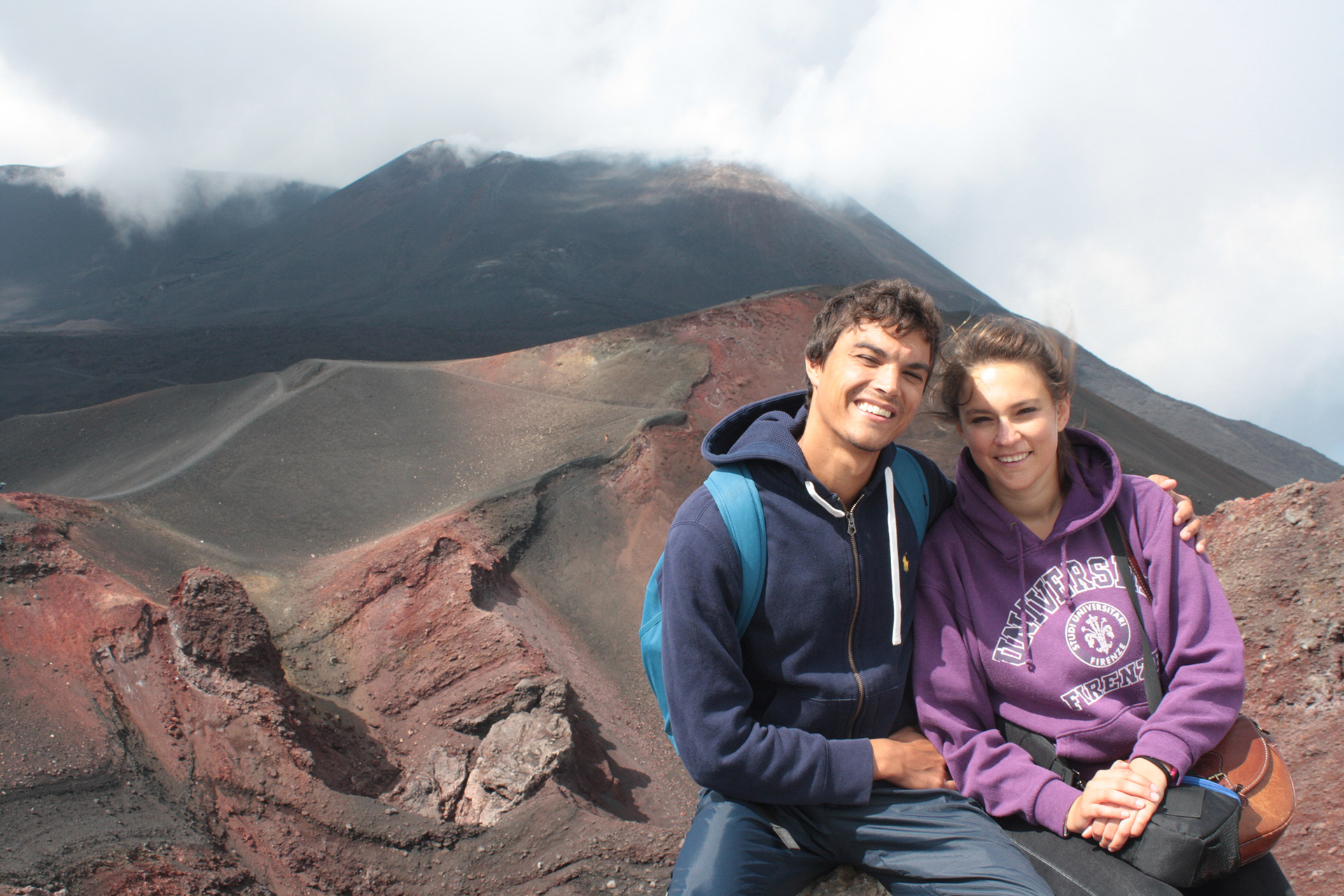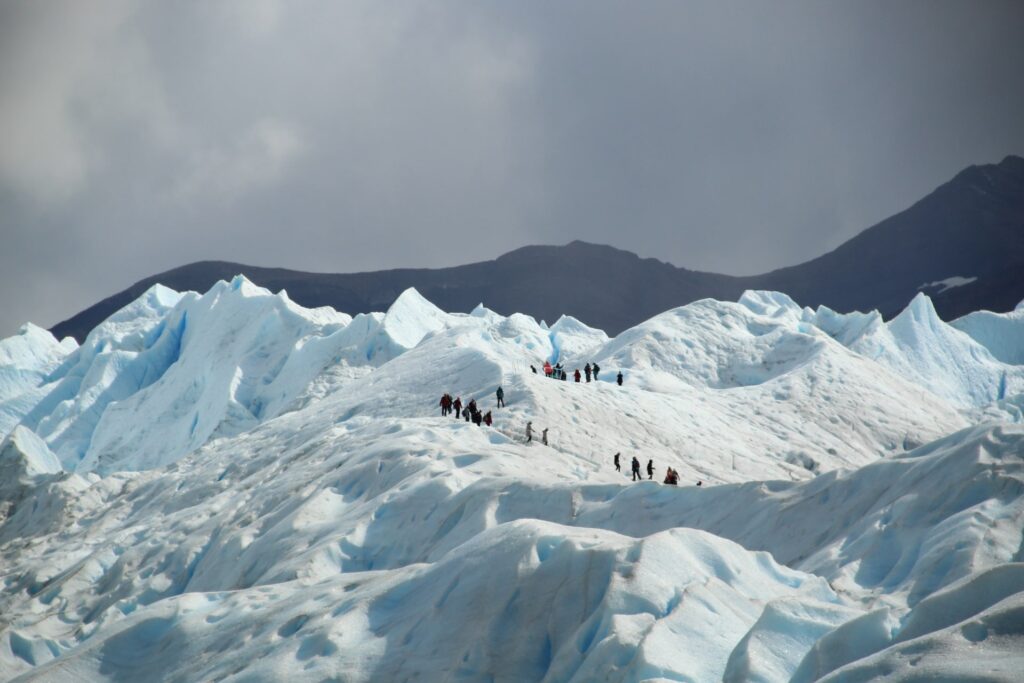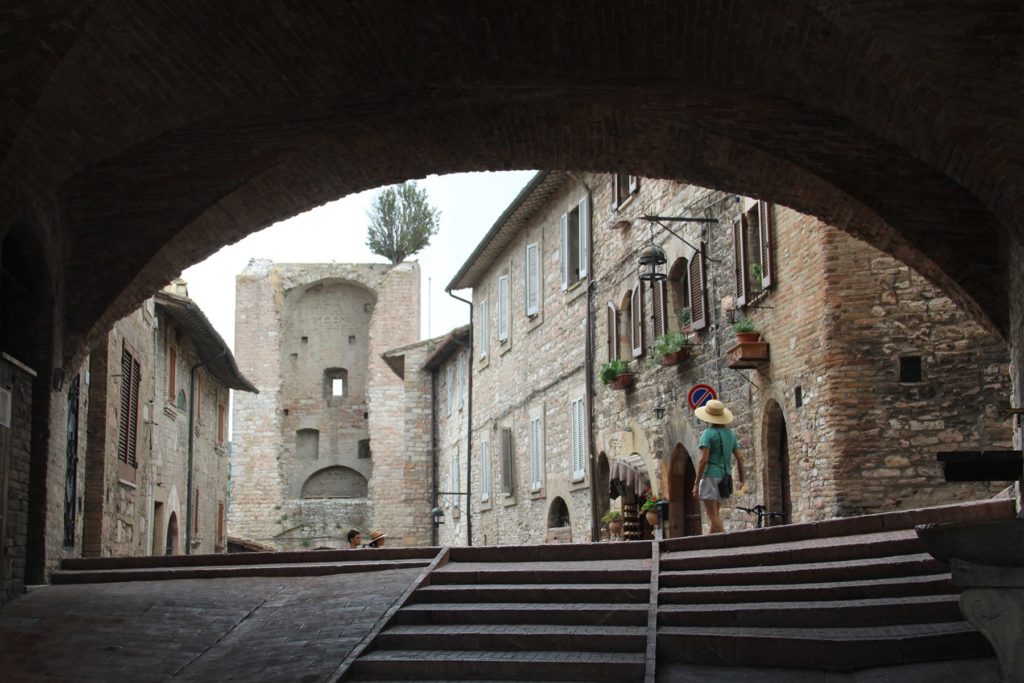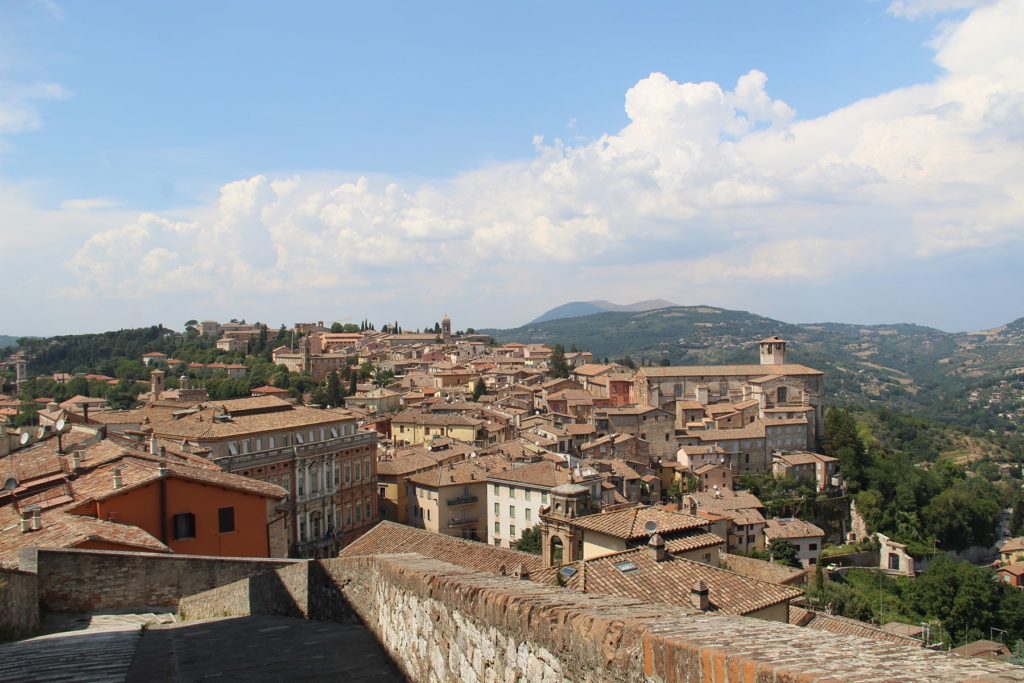Perugia, the capital city of the region of Umbria, is a charming city perched on the hills, like the majority of cities in this region. We spent one day here during our one-week trip in Umbria in August. The cities of Umbria, and especially Perugia, were founded on very ancient settlements and you can visit ruins and monuments belonging to pretty much every historical age: from Etruscans, to Romans, to the Middle age etc. Cities from Umbria can be compared, in an almost profane way, to lasagna: each layer corresponds to a past age and the layers perfectly overlap. The Medieval age was particularly relevant for the city of Perugia and the main square and the palaces in the city centre bear witness to it. Back in that day, the city was ruled by corporations and guilds, i.e. gatherings of the members of a profession, such as artisans and bankers, who took part in civil assemblies.
Perugia is quite small; one day could be enough to visit its main attractions, but of course, the longer you stay in this city, the more things you will find worth visiting. Let’s take a look at the top 6 things to visit in Perugia in one day.
Table of Contents
1. GETTING LOST IN THE CITY’S ALLEYS
The best way to explore Perugia, and the cities in Umbria in general, is getting lost in its steep alleys, where you will find shelter from the sun and get a glimpse of life in this city. These alleys sometimes lead to very charming courtyards: the laundry is drying under the sun and you can hear the voices and noises coming from inside the houses, where people find refuge in the hottest hours of the day.
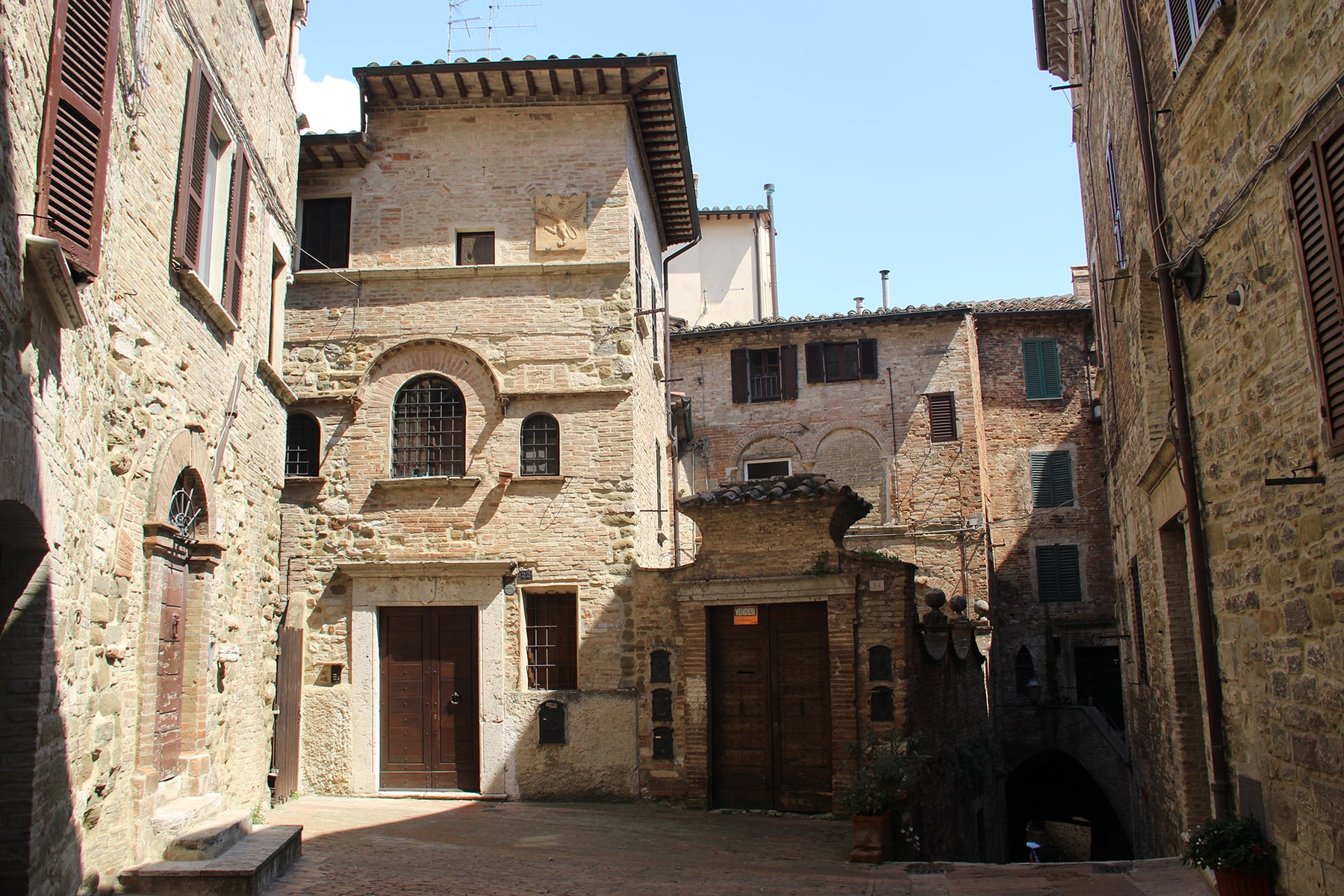
You are going to stumble upon small arches, staircases that somehow always go up and never down, and incredible views on the city.
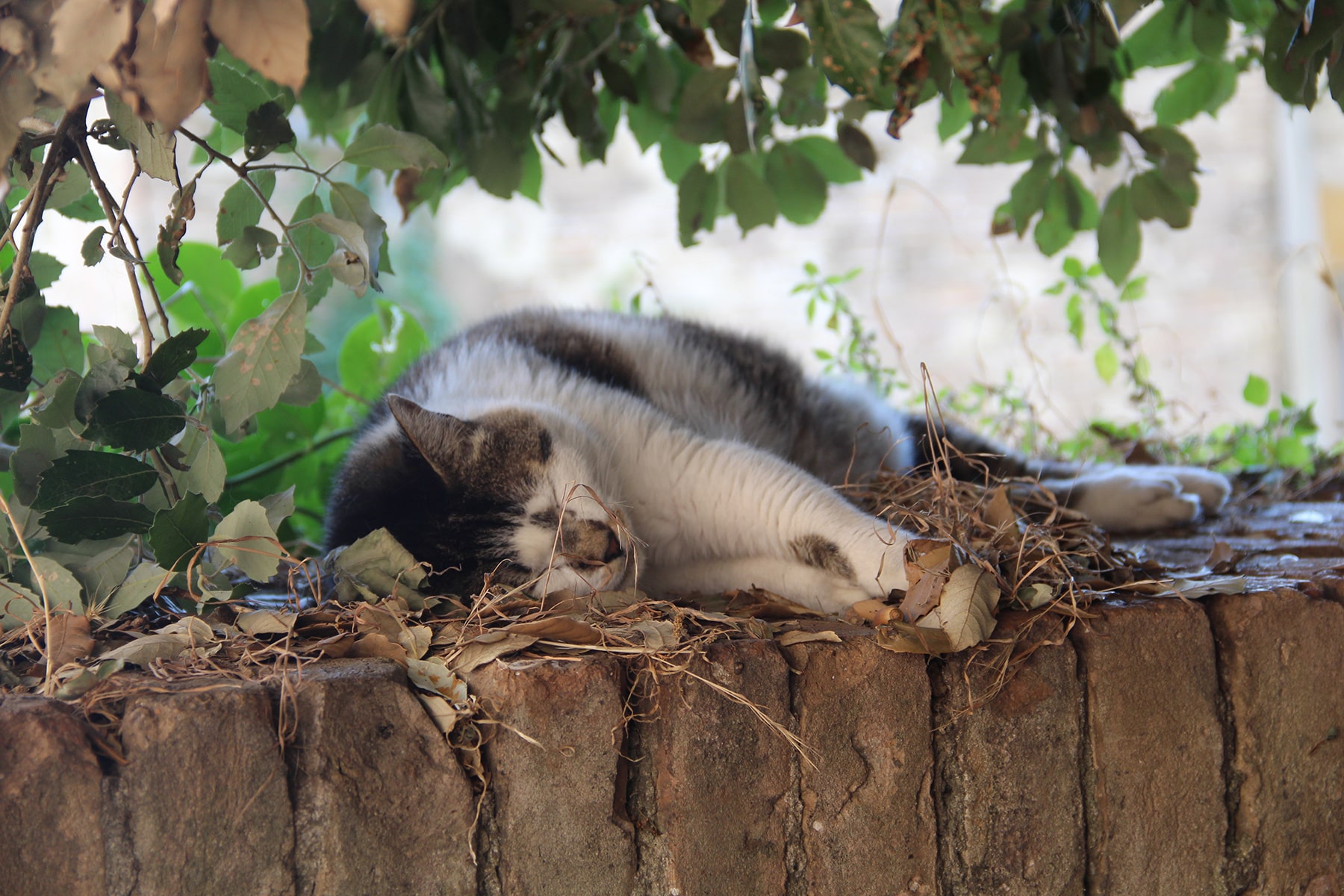
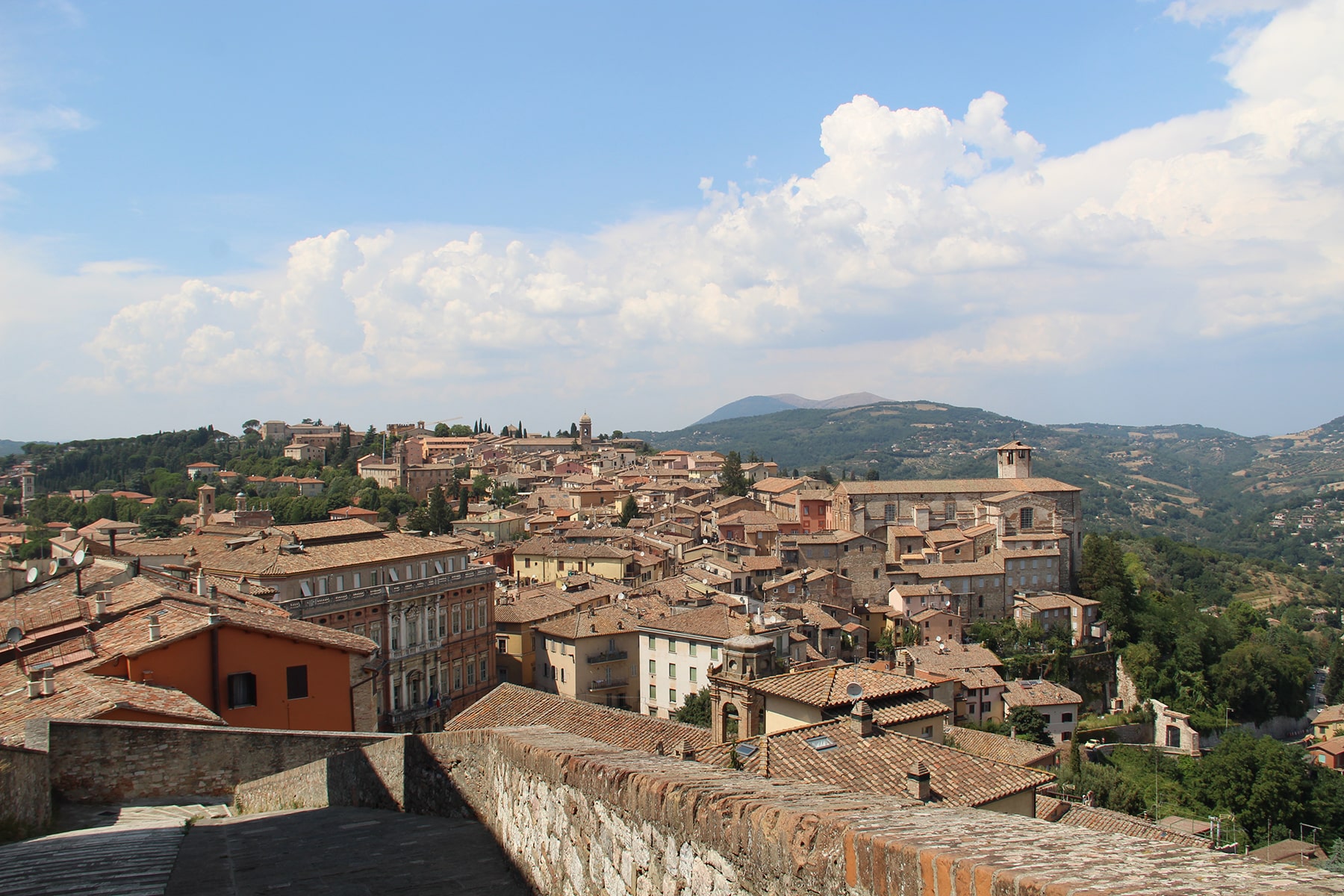
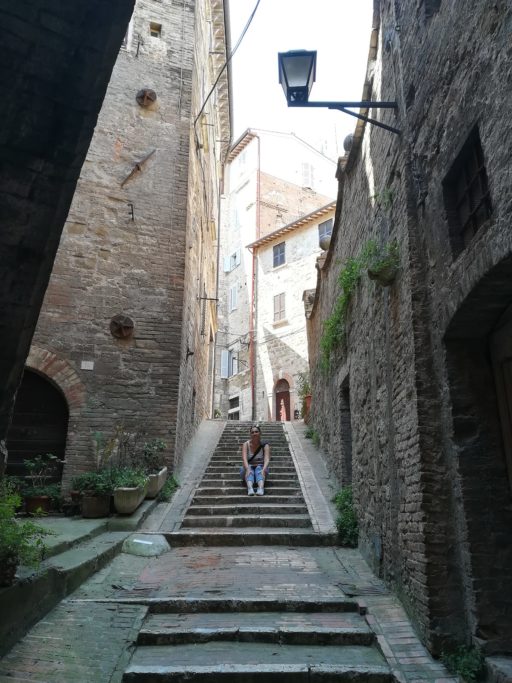
Even if you don’t plan on it, you will end up in the beating heart of the city, the main square IV Novembre.
2. PIAZZA IV NOVEMBRE
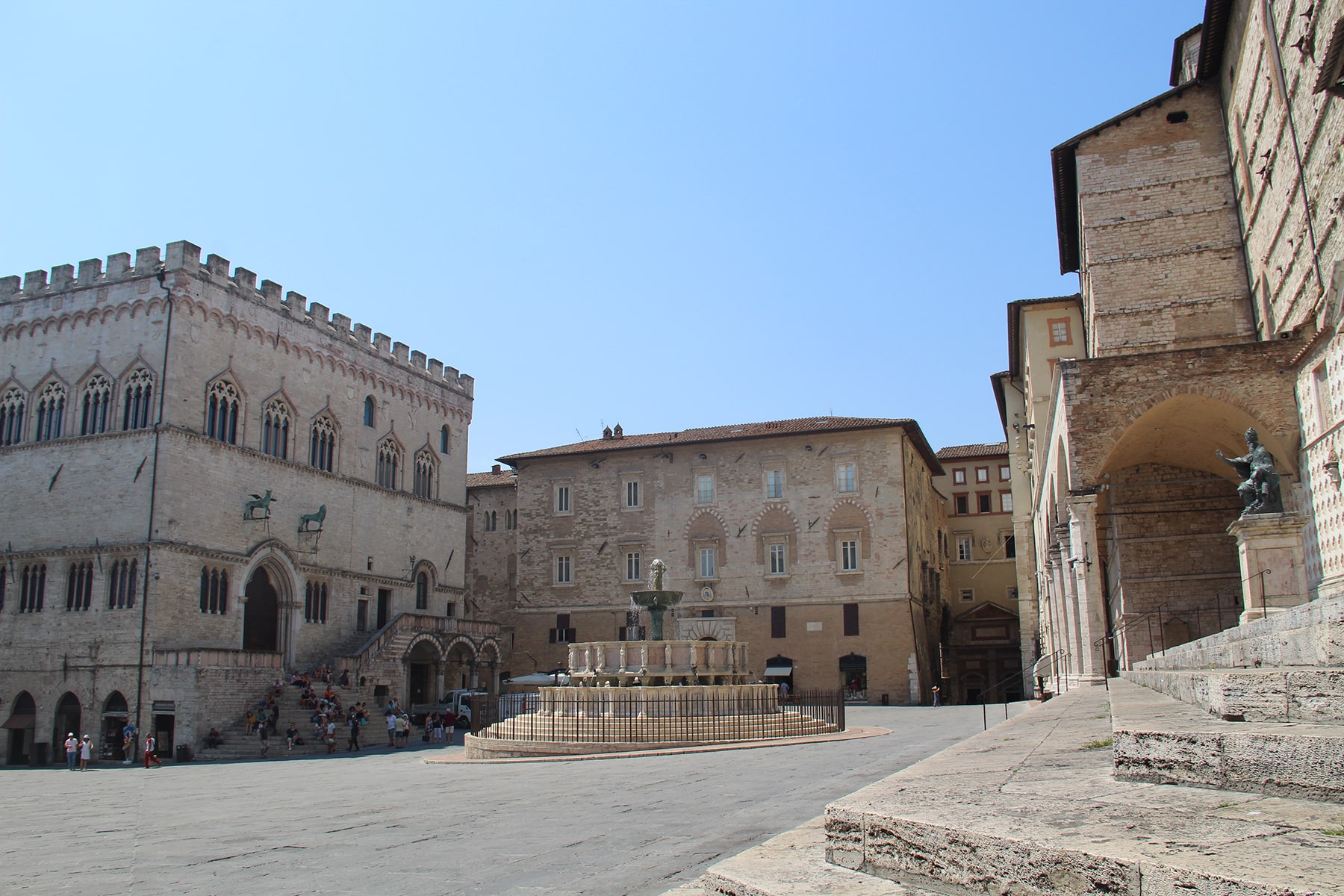
Piazza IV Novembre is not just a square: it is the centre of the city of Perugia, where all its neighbourhoods, called rioni or borghi, start off. That’s why you can take this square as a point of reference. The cathedral, which was unfortunately closed at the time of our visit, the main fountain (Fontana maggiore) and the Palazzo dei Priori palace all overlook this square. The Fontana maggiore, which is located in the middle of the square, is decorated by several profane and religious scenes allowing us to peek into the medieval life led in 1275, when this fountain was built.

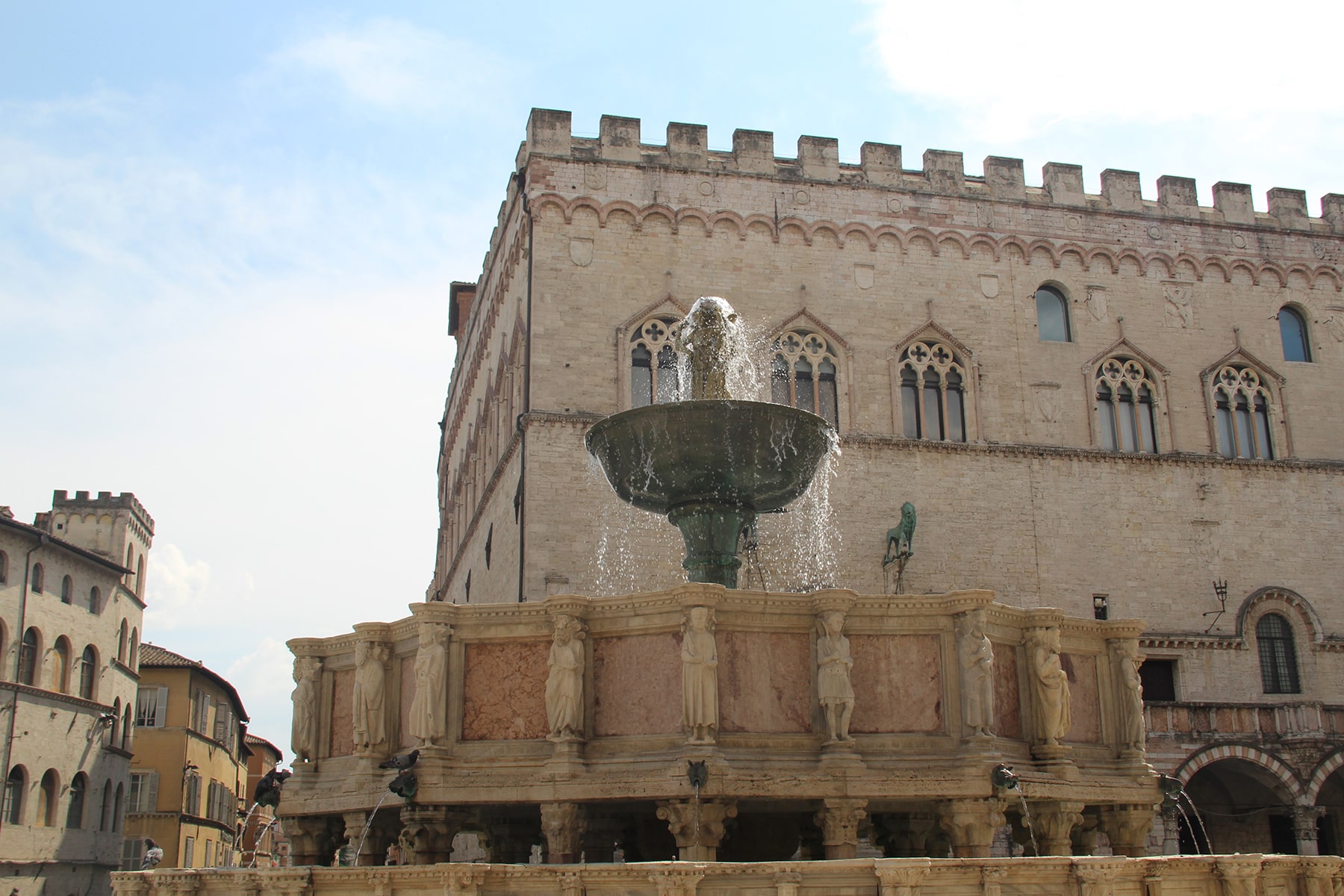
The Palazzo dei Priori palace (town hall), build in the 1290s, housed the meetings of the representatives of the artisan guilds which were elected to rule the city. On the palace’s façade overlooking the square, you can see the statues of a griffin - the symbol of the city of Perugia since the Etruscan age - and of a lion representing the Guelfs.

Going up the staircase on the main square, you can access the beautiful hall called Sala dei Notari decorated with many frescoes (limited opening hours). This hall was once used for the people’s gatherings; however, in the mid-16th century, it became the seat of the guild of notaries, hence the name. The frescoes date back to the 19th century.
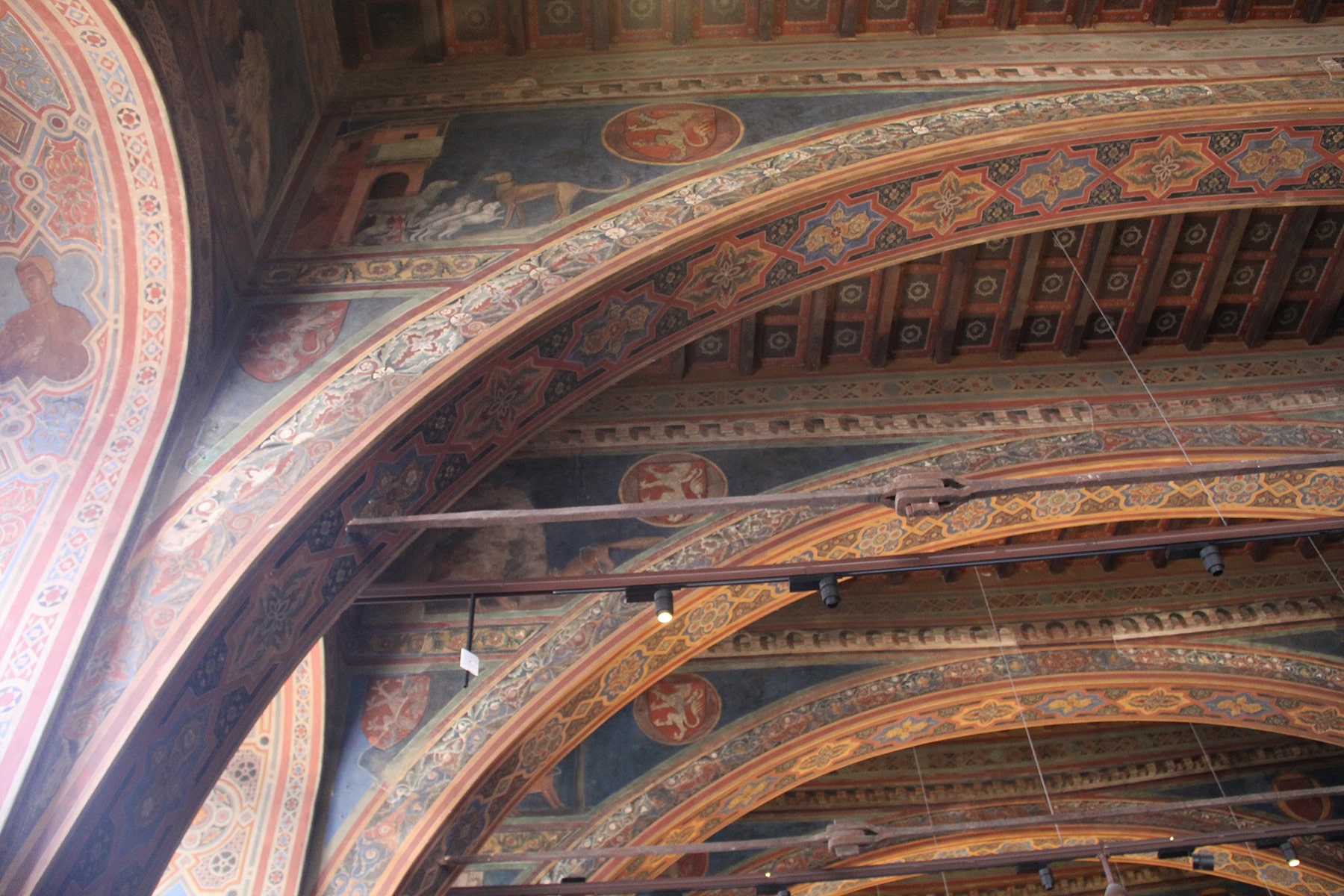
On one side of the palace, you can find another door decorated by the statue of a veal clutched by a griffin; it was built as a homage to the guild of butchers who invested large sums of money to build the town hall.
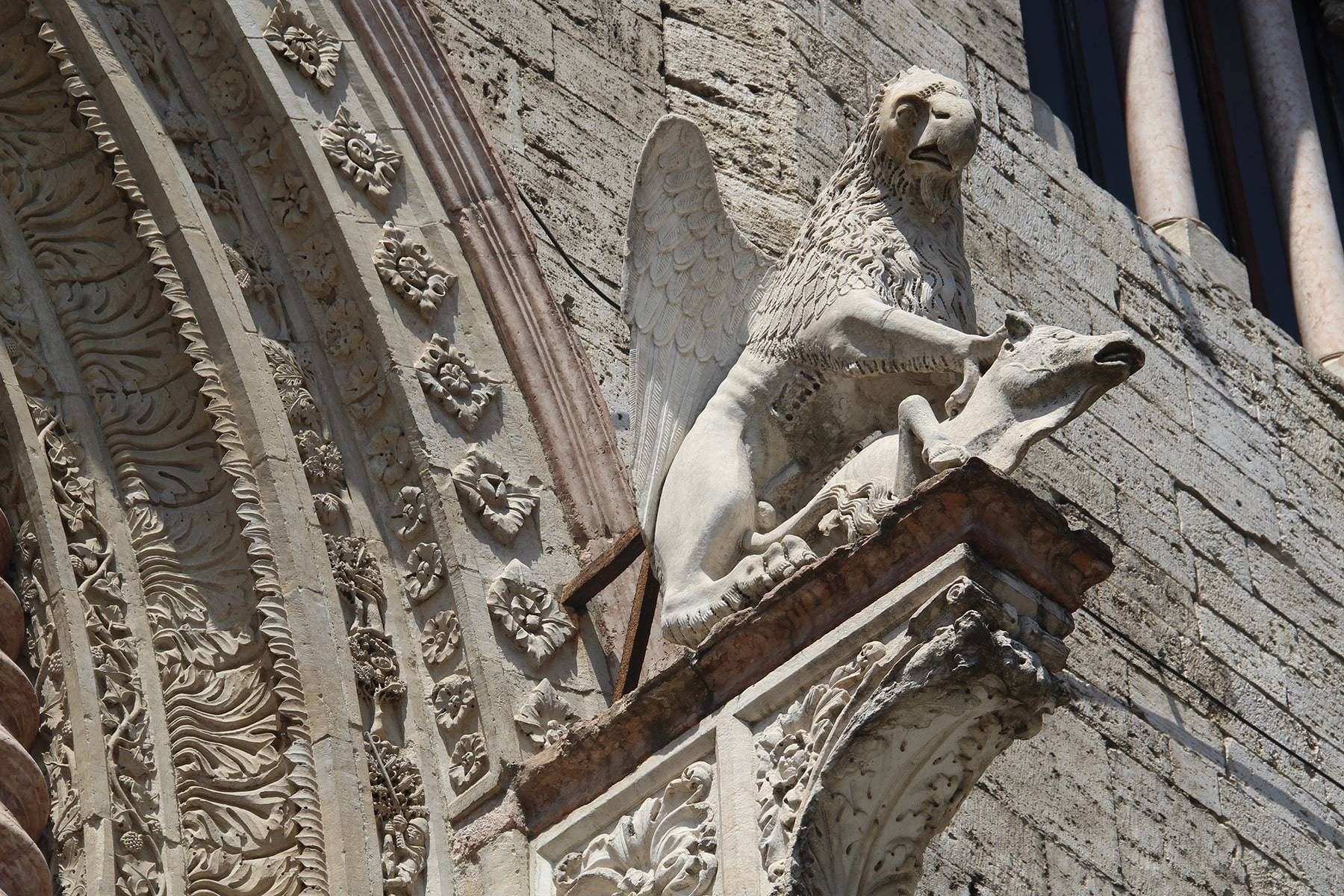
3. NOBILE COLLEGIO DEL CAMBIO
Entering through a small side door in the Palazzo dei Priori, you gain access to the Nobile collegio del Cambio, the historical seat of the guild of bankers and money exchangers. This corporation was once one of the most powerful guilds in the city and this seat was also used as a courthouse for all matters related to money and money exchange. Inside, there is a broad collection of money and weights which were used to assess the value of coins from all over Europe. The main things to visit here are “Sala dell’udienza” (the hall of the hearing) decorated with frescoes by Perugino and the Chapel of Saint John the Baptist, decorated with frescoes, too. It is a must, especially if you want to learn more about corporations and guilds.
4. UNDERGROUND PERUGIA
As we said before, Perugia, like many other cities in Umbria, was built on very ancient settlements. This means that below the modern city, we can find many other layers belonging to ancient eras that help us understand how the old Perugias looked like back in the day. The best way to explore these ancient cities and learn a little bit more about their history is taking the archaeological tour of underground Perugia, organised by the Capitular museum. This tour begins under the main square which was the city’s acropolis. It is a guided tour and you must book in advance (it’s enough to book it in the morning for the afternoon).
During this tour, which is actually also available in many other cities in Umbria, you can see the ruins of the Etruscan, Roman and Medieval cities which are located below the current city of Perugia. The guide was very knowledgeable and we got to see an original wall of the Roman acropolis and an ancient domus, the Roman house.
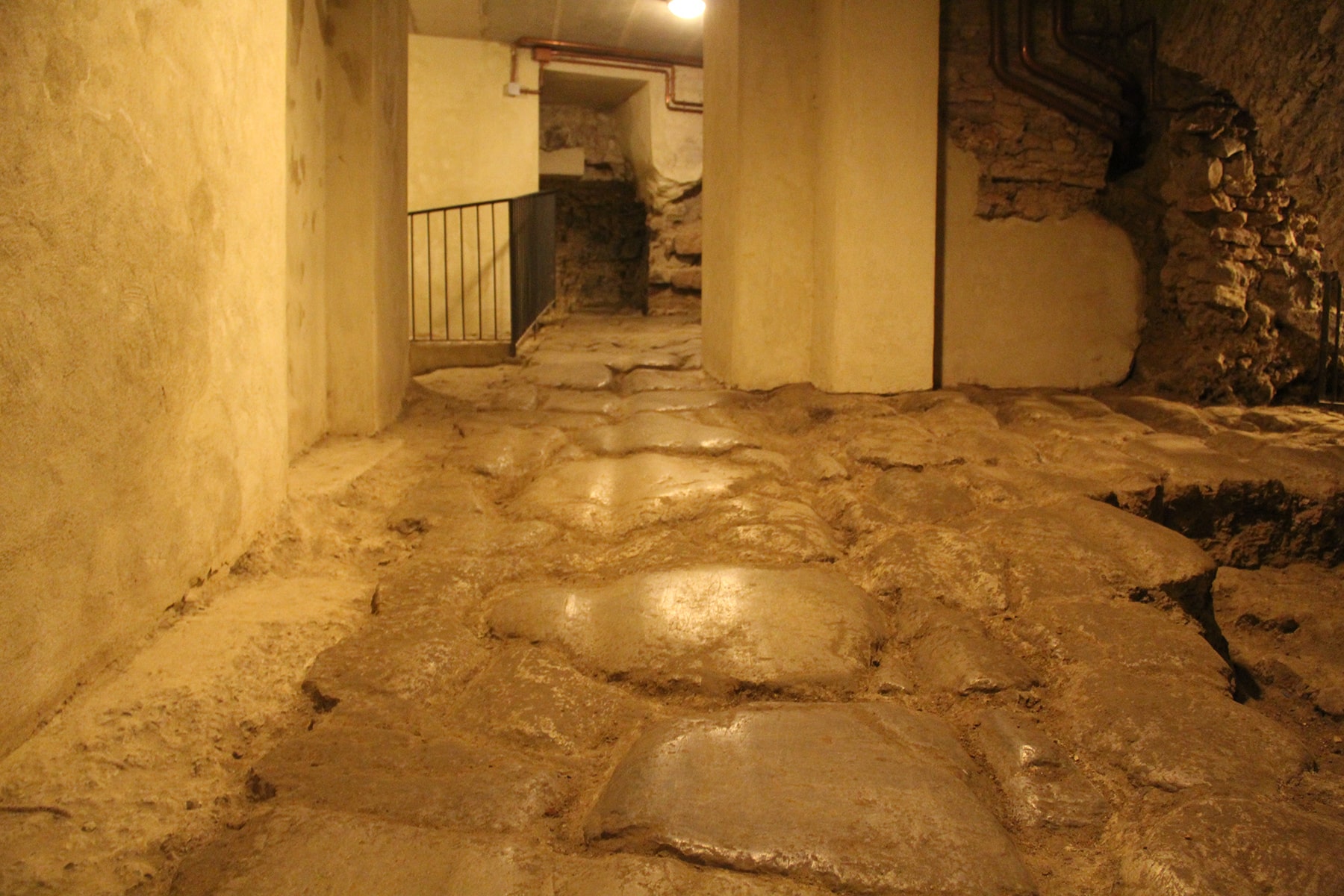
The visit lasted: more or less 45 minutes.
5. SAN SEVERO CHAPEL
Our next stop is the San Severo Chapel which is home to a fresco painted by Raphael and Perugino. The chapel is located slightly outside the city centre and there is only this fresco (and the next-door church if it’s open) to see, so visit it only if you’re interested in Renaissance frescoes. It is located on top of a hill with a very nice view on the city, though.
6. SAN PIETRO ABBEY
Our day in Perugia ended with the visit of the San Pietro abbey and the medieval garden, located slightly outside the city centre, characterised by a bell tower that looks like a pencil. Even though it was written in our guide that the entry was free, we had to pay a ticket and we decided to take the audio guide, too.
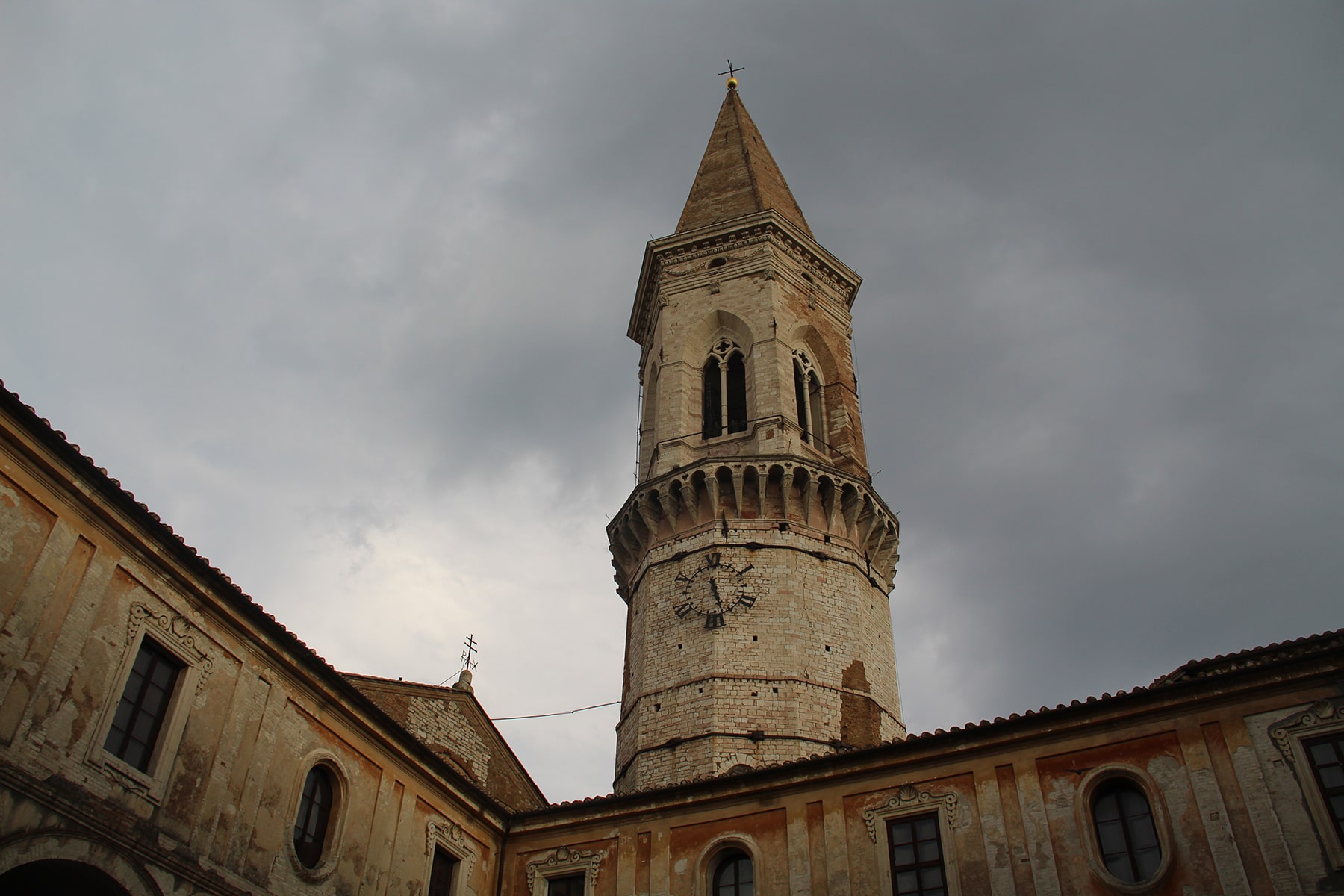
The inside of the church is decorated with luxurious details covering pretty much its whole surface. Art lovers will be able to admire the works of Perugino, as well as the bizarre painting “Apotheosis of the Benedictine Order” by Antonio Vassilacchi: seen from below, it looks like a common representation of Benedictine monks, but, seen from higher up from the main altar, a skull will emerge.

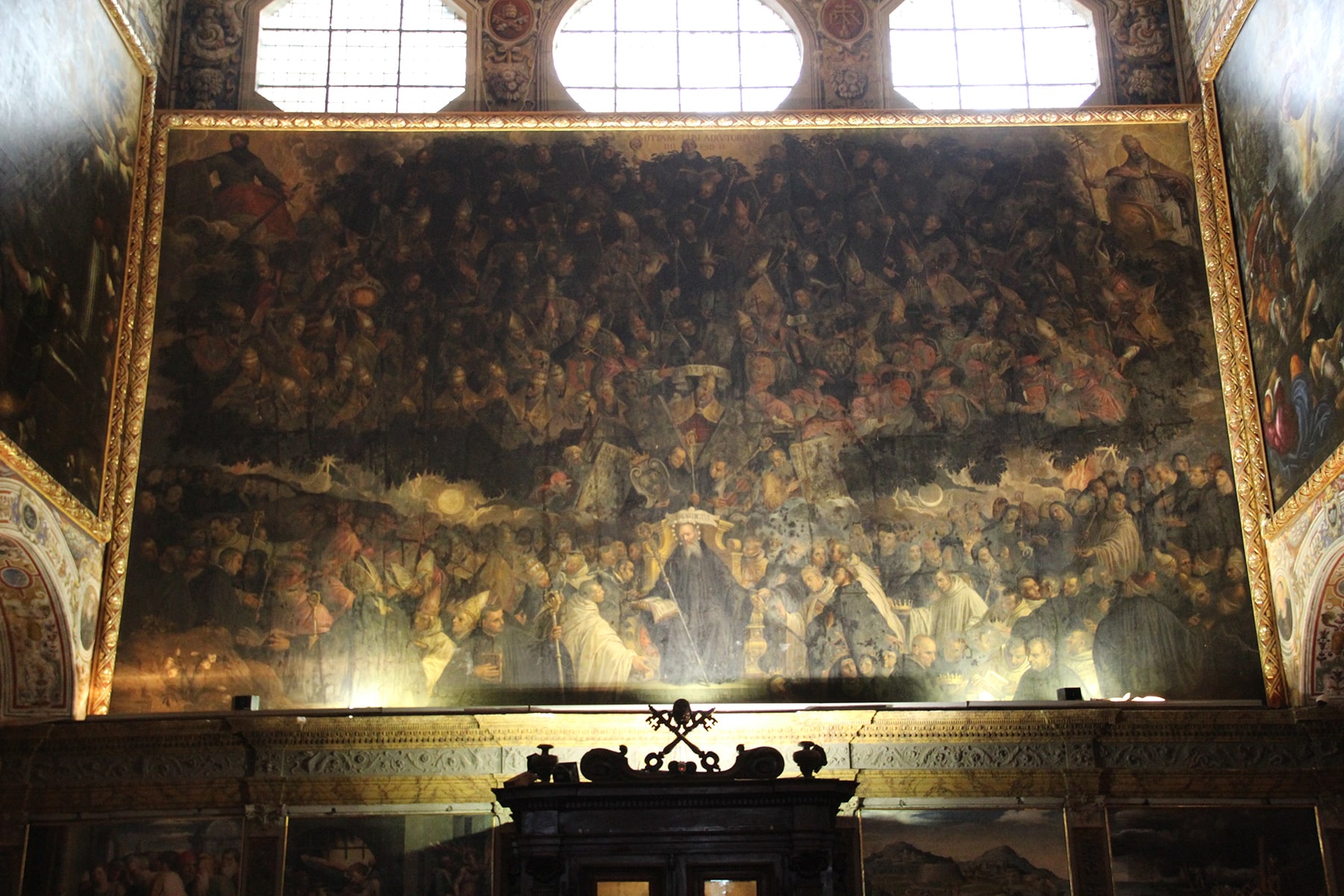
The visit lasted: more than one hour.
Here you have the 6 things to visit in one day in Perugia, but there is so much more to do! Let us know what you visited and whether you liked the city of Perugia!
